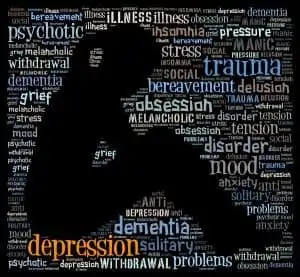Therapy for Adults and Adolescents in Farmington Hills, MI

There are “positive” emotions like joy, excitement and hope. Then there are “negative” emotions like sadness or anger. All feelings are important. Even anger has its place and purpose. Society tells us that it’s not proper to be angry. Walking in a protest to voice one’s upset about an injustice is a healthy example of expressing anger. Road rage is not.
It seems like it’s easier to describe what it is like to feel joy for example. One could say, “joy feels like I’m floating on air.” But when asked what fear looks like to that person, he/she may freeze and not be able to come up with any adjectives. Why? I believe it’s because it’s the way we are socialized to feel “acceptable” emotions like the “positive” emotions. “Negative” emotions like anger are just not as pretty.
Even when you’re not feeling “fine”, how many times have your found yourself saying, “fine” when you’re asked how you are doing.
When you think of an emotion like sadness or anger for examples, how well do you recognize these feelings that they are being manifested?
We can easily go into a state of denial and avoid our emotions, but that would be running away from our personal responsibility to deal with what we are experiencing.
We make our feelings real to ourselves and others when we can fully acknowledge what is going on for ourselves. Talking out loud to others or even quietly in the privacy of our own minds is the first step to identifying what we are feeling.
So for sadness for example, what does sadness look like to you? It can be very different from another person’s sadness. Yours could look like a frowned face and being stand offish. Someone else’s sadness could be expressed with loud cries and lots of tears.
What’s important is to honor how each of us are entitled to feel in our own unique way.
Panic, for example is a feeling that can be harder to recognize. Oftentimes, people don’t even know they are having a panic attack. They think they could be having heart palpitations, or just not feeling good.
Understanding what different emotions come up for you, and what each emotion looks like will be instrumental in developing a healthy sense of self and improved coping skills.
Knowing the cause and effect of your feelings is also important in order to create greater mental stamina.
So let’s use the example of anger. If you know what triggers your anger (cause) such as increased irritability due to sleep deprivation, then getting more sleep would be a preventative measure of getting angry in the first place. If you begin to see that your anger is pushing your loved ones away, then this would be an example of acknowledging the effects of your anger. Another way of putting it is how your anger is affecting those around you.
Some final thoughts….
Now that we’ve covered some basics like knowing how to identify your emotions, acknowledging how you really feel, understanding the cause and effect and your feelings, there’s one more important thing to explore….
Solutions.
If anger for example is presenting a problem for you, and staying angry is not working for you, but is rather hurting you, then what to do?
If anger management is your challenge, find solutions to solve your anger. I know easier said than done. With enough insight and humility, you will be able to come up with some excellent alternatives to sustaining anger. I know it’s not easy. Stick with it and don’t give up. If you lose your way, be forgiving to yourself, and redirect your focus on creating effective solutions to your problems.
In therapy we call these solutions “healthy coping strategies”. Yoga, healthy communication, writing in a journal, or cardio exercise are a few good examples. With enough determination to make positive change, you’ll be able to come up with good ideas to try. Don’t be afraid to step out of your comfort zone and experiment with different strategies of responding to emotionally provocative situations with a new perspective.
In the words of psychiatrist Victor Frankl, author of The Meaning of Life,
“In every situation, there is a cause and effect. In between the cause and effect is a space. In that space is the opportunity to choose a response.”
To contact Rebecca Hayman about therapy, you can call her at 248-459-9191.